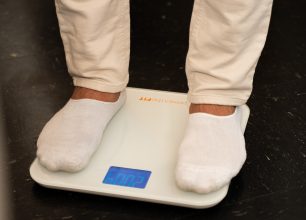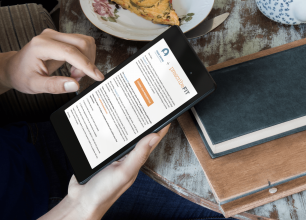In our latest white paper, we decode the benefits of remote patient monitoring technology for orthopedics, including both patients and physicians. Access the full version here: prescribefit.com/rpm-ortho-guide/
The ubiquity of remote monitoring technologies has increased notably in recent years. Patients and physicians alike are now embracing these tools to improve the quality and efficiency of healthcare. For example, 63% of adults are interested in using digital health solutions. To match this enthusiasm, physicians’ use of remote monitoring in 2022 has increased 2.5x since 2016.
What is Remote Patient Monitoring?
Remote patient monitoring technology consists of two primary categories:
- Remote Physiologic Monitoring (RPM): Consists of digital medical devices that track biological metrics such as weight loss and weight gain, blood pressure, and blood oxygen levels. The data is then uploaded to an online platform accessible by the care team.
- Remote Therapeutic Monitoring (RTM): Utilizes non-physiological measurements to monitor how a patient is responding to a therapeutic regimen. Patients self-report data, such as pain or exercise, and the data is automatically shared with the care team.
In addition to improving the quality and efficiency of care for their patients, physicians can use remote monitoring to create an additional revenue stream for their practice. The Centers for Medicare & Medicaid Services (CMS) have expanded coverage to remote monitoring with four CPT codes: 99453, 99454, 99457, and 99458. For the first time in 2022, CMS introduced five CPT codes specific to RTM: 98975, 98976, 98977, 98980, and 98981.
Patients likewise enjoy the benefit of expanded accessibility, with the option to access healthcare from the comfort of their own homes. This is particularly valuable for hard-to-reach populations such as those in rural areas and the elderly.
The Benefits of RPM for Orthopedics
How can orthopedic providers benefit from remote monitoring? For one, orthopedic physicians have a unique opportunity to help patients achieve better outcomes and improve their quality of life.
Obesity is a crisis in America, with 42% of adults over the age of 20 considered obese. Among the orthopedic patient population, that figure can be as high as 55%. Due to this particular severity of obesity in orthopedics, a crisis of Orthobesity™ is on the rise as well.
The rise of Orthobesity™ is exemplified by evidence suggesting that excess weight can cause and/or exacerbate musculoskeletal (MSK) issues, as well as lead to surgery complications.
Orthopedic providers are well-positioned to combat the obesity crisis directly. To improve patient outcomes, they can employ remote monitoring solutions to guide patients to a healthier weight. A review of research on the use of remote monitoring for weight loss found that it offers substantial benefits, including clinically meaningful reductions in weight.
The review affirms the benefits of both RPM and RTM solutions for weight loss. To illustrate, patients participating in videoconferencing appointments and weight/physical activity monitoring lost more weight than other groups in the study.
In addition to weight loss, orthopedic providers can employ RPM as a conservative treatment to help at-risk patients reduce pain. If they do undergo surgery, patients can also improve their chances of a successful recovery.
Conclusion
Remote monitoring offers many clinical and financial benefits for physicians and patients including improved efficiency, quality, and accessibility of care. More patients than ever are interested in remote care, and the barrier to entry is low for orthopedic practices. Remote patient monitoring companies can help implement the technology, monitor patient results, and coach patients throughout their specific treatment plans.
Learn more about the benefits of remote monitoring for orthopedics by accessing our full white paper at prescribefit.com/rpm-ortho-guide/.
Published on October 25, 2022

